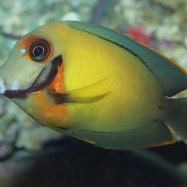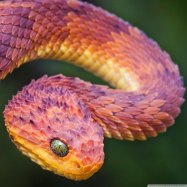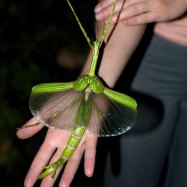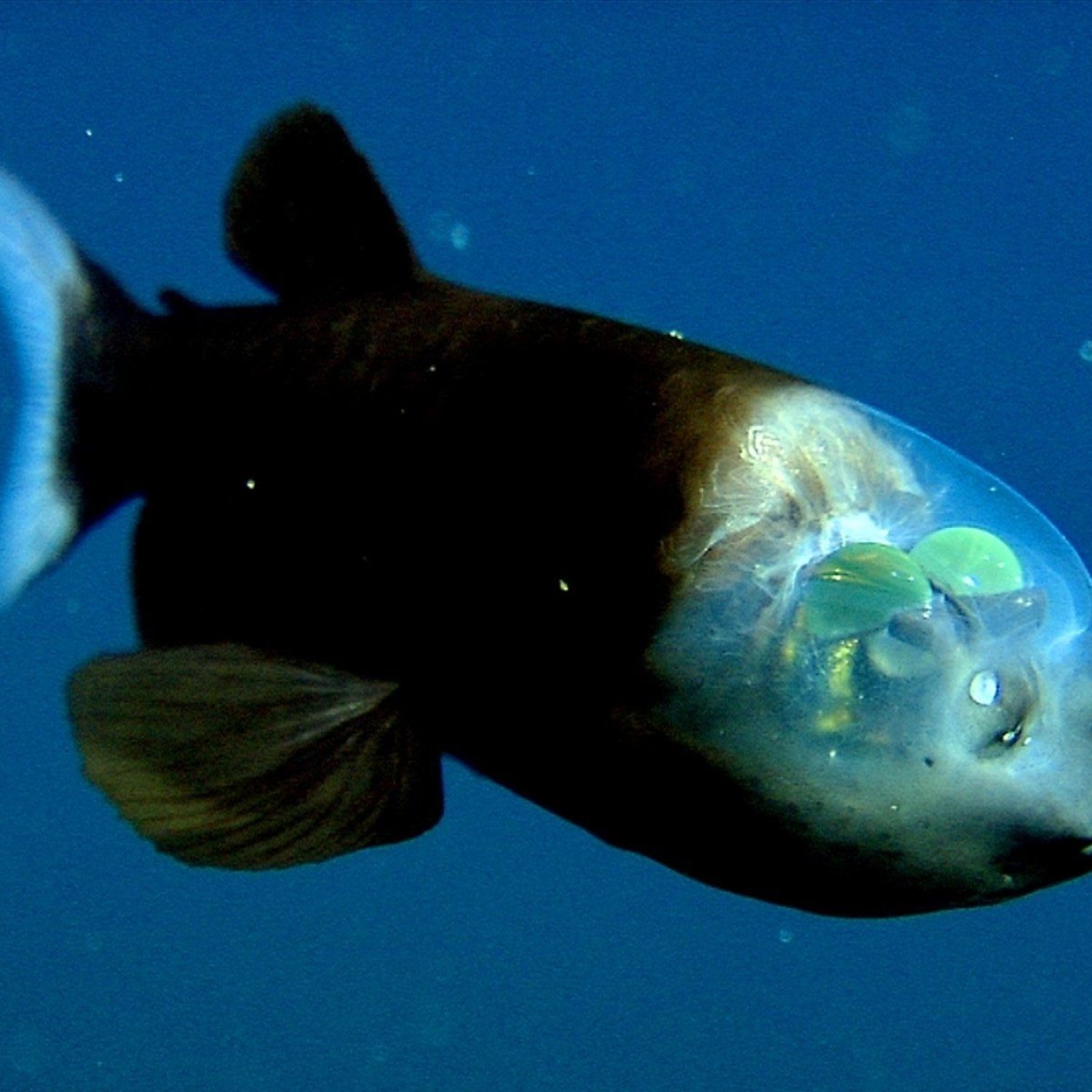
Barreleye Fish
Up to 6 inches
The Barreleye Fish, also known as the spookfish, is a fascinating creature found in deep waters. With a slim and elongated body that can grow up to 6 inches, it belongs to the Opisthoproctidae family. Its unique transparent head allows it to see in all directions, making it a master of its dark environment. #BarreleyeFish #DeepSeaCreatures #Opisthoproctidae
Animal Details Summary:
Common Name: Barreleye Fish
Kingdom: Animalia
Habitat: Deep sea
Rare and Mysterious: The Fascinating World of the Barreleye Fish
In the vast expanse of our oceans, there lies a creature that is so elusive and enigmatic that it has captured the curiosity of scientists and marine enthusiasts alike. It is the Barreleye Fish, also known as Opisthoproctus soleatus. This peculiar animal has an intriguing appearance and a hidden lifestyle that has made it a popular subject of study and fascination.A Unique Existence
The Barreleye Fish belongs to the Kingdom Animalia, which includes all living organisms with complex and distinct cell structures Barreleye Fish. It falls under the Phylum Chordata, which is known for its members possessing a backbone or notochord. Furthermore, it is categorized under the Class Actinopterygii, which includes ray-finned fishes with bony skeletons. This exceptional fish is placed in the Order Argentiniformes, a group of deep-sea predators. It is further classified under the Family Opisthoproctidae, a family solely dedicated to the Barreleye Fish.The World below the Depths
The Barreleye Fish is mainly found in deep-sea habitats, specifically in the mesopelagic and bathypelagic zones, where depths can reach up to 2,500 meters or 8,000 feet. These areas are typically characterized by darkness, low temperatures, and high water pressure.The deep-sea is where the Barreleye Fish thrives due to its unique adaptations, making it well-suited for an unexplored and extreme environment. With a translucent body, this creature is virtually invisible to its predators and prey. Its transparent skin allows it to blend in with the surrounding water, giving it a stealthy advantage Bernese Mountain Dog Mix.
A Hunter of the Deep
The Barreleye Fish is a carnivorous animal and a ferocious predator. Its main source of food is small fishes and invertebrates, commonly found in the deep-sea. This fish has an exceptional strategy for capturing its prey, using its elongated and tube-like eyes to its advantage.Despite having eyes, the Barreleye Fish's vision is relatively poor. However, it has developed an extraordinary ability to rotate its eyes to point upwards towards the surface. It can follow any movement above it, which is essential in the dimly lit depths where it dwells. This feature also allows it to scope out its prey, giving it an advantage in hunting.
From All Corners of the Globe
The Barreleye Fish is a creature that is distributed worldwide. It is found in all major oceans, spreading across various countries. These include the Pacific, Atlantic, Indian, and Arctic Oceans. Despite their global distribution, these elusive creatures are still considered rare sightings due to their deep-sea lifestyle.A Closer Look at the Barreleye Fish
The Barreleye Fish is a small animal, with an average length of only up to 6 inches. It is known for its distinct body shape, which sets it apart from other species. Its body is long and slim, allowing it to glide effortlessly through the water. Its head is also elongated, with a protruding snout at the end. Its gills are also uniquely placed on top of its head, making it easier for the fish to breathe while feeding on the ocean floor.Exotic Coloration
While most fishes possess an array of vibrant colors, the Barreleye Fish is quite the opposite. It has a translucent body, which means that its internal organs and bone structures are visible through the skin. However, this mysterious animal also boasts a unique coloration that has piqued the interest of scientists. Its eyes have a greenish tint, while its fins are a deep red color. These distinct features add to the Barreleye Fish's rare and exotic appearance.The Mystery Continues
Despite several studies conducted on the Barreleye Fish, there is still a lot to learn and uncover about its behavior and lifestyle. Scientists are still baffled by this fish's unusual features, and with limited opportunities for observation, many questions remain unanswered.The Barreleye Fish is one of the most mysterious creatures in our oceans, but its impact on our understanding of marine life is significant. Its unique adaptations and elusive behavior have added to the intrigue and mystery of the deep seas. As we continue to explore and discover the hidden depths of our planet, it is fascinating to think about what other surprises and wonders await us.

Barreleye Fish
Animal Details Barreleye Fish - Scientific Name: Opisthoproctus soleatus
- Category: Animals B
- Scientific Name: Opisthoproctus soleatus
- Common Name: Barreleye Fish
- Kingdom: Animalia
- Phylum: Chordata
- Class: Actinopterygii
- Order: Argentiniformes
- Family: Opisthoproctidae
- Habitat: Deep sea
- Feeding Method: Carnivorous
- Geographical Distribution: Worldwide
- Country of Origin: Various countries
- Location: Deep waters
- Animal Coloration: Transparent
- Body Shape: Slim and elongated
- Length: Up to 6 inches
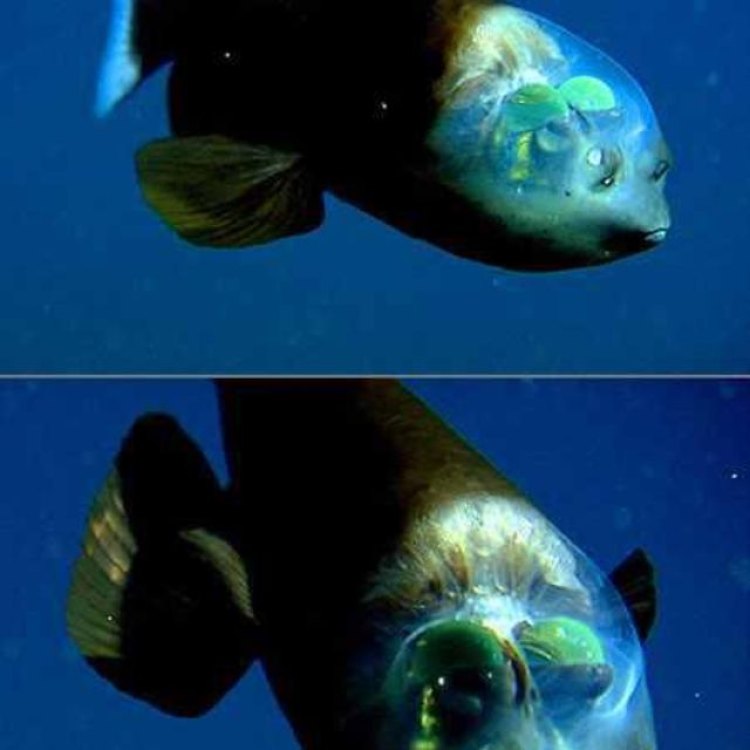
Barreleye Fish
- Adult Size: Up to 6 inches
- Average Lifespan: Up to 5 years
- Reproduction: Sexual
- Reproductive Behavior: Unknown
- Sound or Call: No sound production
- Migration Pattern: Unknown
- Social Groups: Solitary
- Behavior: Unpredictable movement patterns
- Threats: Habitat destruction
- Conservation Status: Not evaluated
- Impact on Ecosystem: Predator
- Human Use: None
- Distinctive Features: Transparent head and tubular eyes
- Interesting Facts: Barreleye fish have highly sensitive tubular eyes that can rotate within their transparent head.
- Predator: Unknown
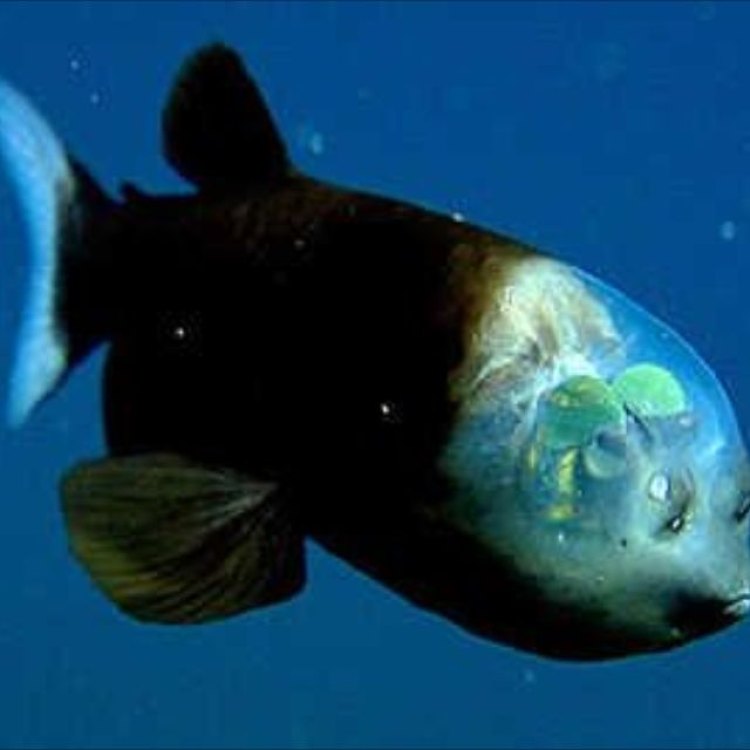
Opisthoproctus soleatus
The Enigmatic Barreleye Fish: A Marvel of the Deep Sea World
The vast expanse of the ocean is home to a plethora of magnificent creatures, some of which remain hidden from human eyes. One such creature is the Barreleye fish, also known as the spook fish or the macropinna microstoma. This elusive fish has been a subject of fascination for marine biologists and researchers for decades due to its unique physical attributes and mysterious behavior. In this article, we will explore the intriguing world of the Barreleye fish and unravel its secrets PeaceOfAnimals.Com.The Barreleye fish, belonging to the family Opisthoproctidae, was first discovered in 1939 by scientists from the Scripps Institution of Oceanography. This elusive fish is primarily found in the deep, dark waters of the Pacific and the Atlantic oceans, at depths of up to 2,500 feet. Due to its elusive nature and the difficulty of studying it in its natural habitat, there is limited information about the Barreleye fish. However, what we do know is enough to leave us in awe of this remarkable creature.
Adult Barreleye fish can grow up to six inches in size, which is relatively small compared to other species of fish. They have an average lifespan of up to five years, making them relatively short-lived. The sexual reproduction of this species is similar to that of most fish, with males and females mating to produce offspring. However, unlike other fish species, the Barreleye fish's reproductive behavior is yet to be fully understood, as it remains largely undocumented.
One distinct characteristic of the Barreleye fish is its unique set of eyes Black Mamba. Its transparent head is resilient and dome-shaped, with a pair of tubular eyes placed on the top. These eyes are highly sensitive and contain a green lens, which filters blue light from the depths of the ocean. The tubular shape of the eyes allows them to rotate up and down within the fish's head, giving it a 360-degree field of vision. This feature is crucial for the Barreleye fish as it helps it to locate prey and potential predators in the pitch-black deep sea environment.
Despite their sensitive eyes, Barreleye fish do not produce any sound or call, which is a common communication method among marine animals. It is believed that their vision is the primary sense they use to navigate and communicate with other individuals. However, little is known about their social behavior, as they are mostly solitary creatures. Researchers speculate that these fish may occasionally come together to mate or feed, but no evidence has been found to support this theory.
The behavior of the Barreleye fish is another unique aspect that sets it apart from other species. Due to their unpredictable movement patterns, these fish are difficult to track and observe in their natural habitat. They are known to swim in a vertical position, allowing their eyes to remain at the same level as their potential prey. Furthermore, their movement is largely random, with no specific migration pattern or direction.
The Barreleye fish's habitat is primarily the deep sea, which is a hostile environment for most life forms due to the high pressure, low temperatures, and limited food sources. However, the biggest threat to the Barreleye fish is the destruction of its habitat. As humans continue to explore and exploit the ocean's depths, the fragile ecosystem is severely impacted. This, in turn, affects the survival of the Barreleye fish and other deep-sea creatures, as their food sources and shelter are destroyed.
As of now, the conservation status of the Barreleye fish is listed as "Not Evaluated" by the International Union for Conservation of Nature (IUCN). Due to the limited information available about this species, it is challenging to assess its population and threats accurately. However, given the ongoing destruction of its habitat and its low reproductive rate, it is essential to monitor and conserve this unique fish species.
Despite its elusive nature, the Barreleye fish plays a crucial role in the deep-sea ecosystem. As a predator, it helps maintain a balance in the food chain, preying on smaller fish and invertebrates. The Barreleye fish's tubular eyes also make it a highly efficient predator, allowing it to locate prey even in the dark depths of the ocean. Its transparent head and green lenses also act as a camouflage, making it difficult for other predators to spot and attack it.
In the past, humans have not utilized the Barreleye fish in any significant way. This is mainly due to its small size and limited availability. However, with the growing interest in deep-sea exploration for potential resources, there is a fear that the Barreleye fish may become a target for commercial fishing. As a result, it is crucial to raise awareness about this species and promote responsible fishing practices to protect it from harm.
In conclusion, the Barreleye fish remains an enigma, with many aspects of its behavior and physiology yet to be discovered. Its unique features, such as the transparent head and tubular eyes, make it a fascinating creature and a subject of interest for researchers. However, its survival is threatened by human activities and the destruction of its fragile habitat. It is essential for us to understand and protect this remarkable and mysterious fish to ensure its survival and maintain the delicate balance of our ocean's ecosystems.
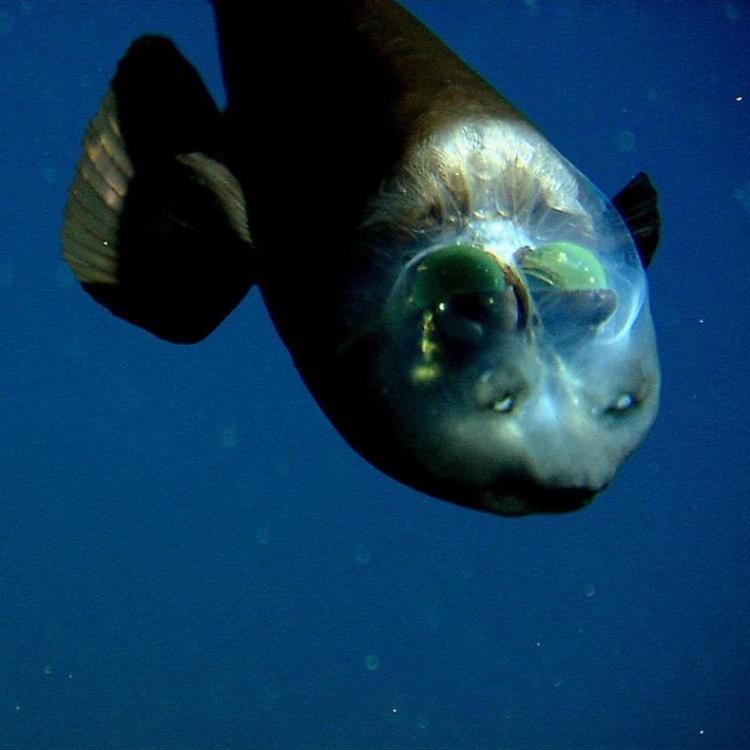
Rare and Mysterious: The Fascinating World of the Barreleye Fish
Disclaimer: The content provided is for informational purposes only. We cannot guarantee the accuracy of the information on this page 100%. All information provided here may change without prior notice.





